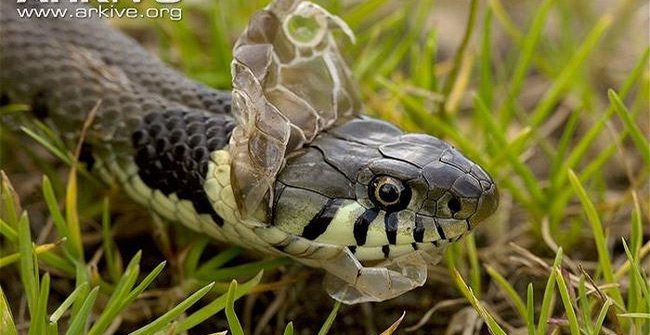With snakes, whether they are tiny species or giant venomous cobras, they undergo molting (shedding skin) an average of 4 to 8 times a year. So, why do snakes need to molt?
The warm season is typically when snakes shed their skin more frequently compared to the cold season, as snakes are hibernating animals.
Snakes molt to replace their old, worn-out skin that can no longer stretch to accommodate their growing bodies. This process also helps them eliminate parasites that may have settled on their dry skin.

Molting also helps snakes remove parasites from their dry skin.
As a snake’s body grows, its skin stretches. However, unlike human skin, snake skin has very limited elasticity, making it difficult to adapt to their new body size. At a certain point, snakes must shed their old skin.
When the time to molt arrives, snakes will form a new layer of skin beneath the old one. Once this process is complete, they will begin the shedding process by rubbing against rough surfaces like rocks or tree trunks, creating a tear in the skin, usually starting at the nose.
Before molting, snakes often refrain from eating and seek a spot that is rough, adequately concealed, and has suitable temperature and humidity conditions to prepare for the challenging period ahead.
The shedding process usually takes several days. The initial crack that allows the snake to slither out of its old skin appears at the mouth. The snake exerts all its strength and relies on the rough surface it has chosen to escape its old skin.
The molting process leaves snakes vulnerable to predators due to exhaustion and the softness of their new skin. The journey to maturity for snakes is certainly not an easy one, is it?

















































